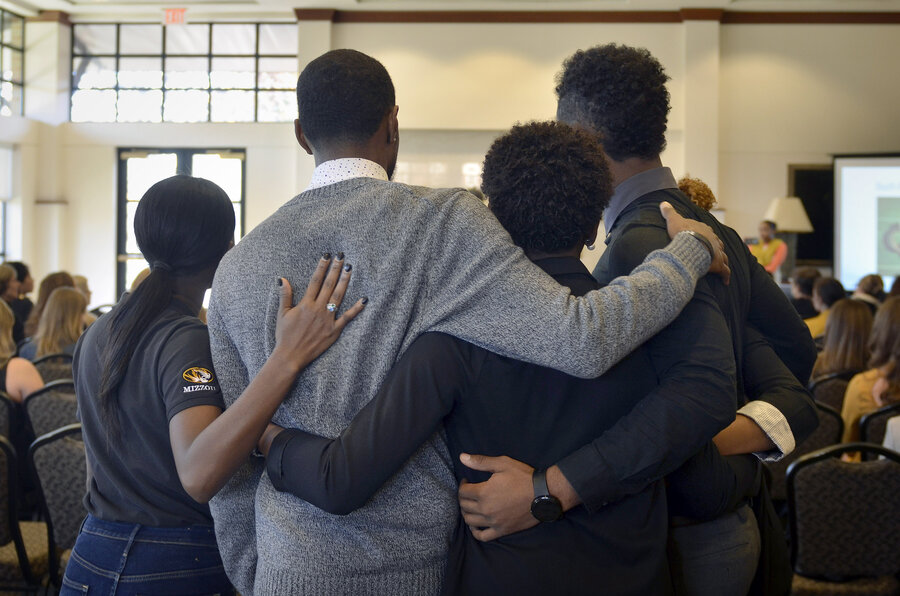Is there more racism in the US, or are we just more candid about it?
Loading...
A poll of nearly 2,000 racially diverse Americans conducted by CNN and the Kaiser Family Foundation found that about half say racism is "a big problem" in society today.
Only a quarter described racism this way four years ago, the report points out, and 41 percent called racism a big problem two decades ago, during the era of the O.J. Simpson trial and the Rodney King case.
This finding raises the question: Is there more racism today?
There may not be more, say some social scientists. It’s just different.
"What's changed," Glenn Adams, a professor of psychology at the University of Kansas told CNN "is that more people are aware of it."
Videos of police violence in different cities, and news of student protests against racism at universities around the country, now circulate quickly and widely across social and traditional media, making racism hard to ignore.
"Black folks tended to know about this before. Now white folks are starting to know about it more,” Dr. Adams said. “Now, with this kind of evidence, people have to re-evaluate their sense of what is true and what is not true, so it becomes a little bit harder for people to deny."
In 2013 Adams, KU doctoral candidate Jessica Nelson, and Texas A&M psychologist Phia Salter, surveyed 199 white students and 74 black students to understand how different groups perceive racism.
They found that minority groups – who are often criticized for exaggerating their perceptions of racism – might actually just be more aware of it because they’re more knowledgeable about the history of race relations than majority groups.
This finding could help explain a CNN survey finding that blacks and what the news network describes as Hispanics see racism as more of a problem than whites, though the percentage is growing among all races.
About two-thirds of blacks (66 percent) and Hispanics (64 percent) said racism is a big problem, reports CNN, while 43 percent of whites said the same.
More Hispanics say racism is a big problem now than they did in 1995, when less than half responded that way. Among blacks, the share who said racism was a big problem dropped from 68 percent in 1995 to 50 percent in 2011, and now has climbed back to 66 percent.
But this probably doesn’t mean that racism went away and then came back.
"After the 1960s and early 1970s, somehow we developed the mythology that systemic racism disappeared," Eduardo Bonilla-Silva, a professor of sociology at Duke University, told CNN.
It didn’t, he said. It just became harder to identify, because it doesn’t manifest itself in overt ways, such as legally imposed school segregation or the brutal violence against blacks and other minorities by hate groups such as the Klu Klux Klan.
"The main problem nowadays is not the folks with the hoods, but the folks dressed in suits," said Dr. Bonilla-Silva, who calls today's version the "new racism."
New racism, he says, "works in mysterious ways and is quite effective in maintaining white privilege."
"For example, instead of saying as they used to say during the Jim Crow era that they do not want us as neighbors, they say things nowadays such as 'I am concerned about crime, property values and schools,’” he says.
But progress seems within reach, buoyed by our digital, hyperconnected lives that are making it more difficult for people to hide from the facts.
Mark Naison, a professor of history and African-American studies at Fordham University, told CNN that he has noticed his students are becoming more empathetic and willing to talk more honestly about racial issues than they did even just five years ago, and definitely more so than 10 or 20 years ago.
He thinks part of the reason this is happening is due to a significant increase of multiracial families, which is one trend that has helped the nation have a more open and honest conversation about race.
“That conversation is difficult," Dr. Naison said. "But our history is difficult. Our present is difficult. We need to talk about it."







